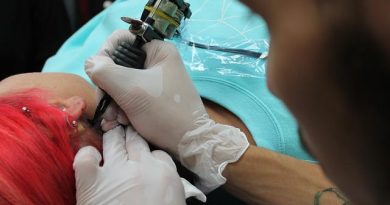Abortion: A Public Health Crisis
Abortion: A Public Health Crisis.Many women faced with the reality of unwanted pregnancy have chosen to solve their problems by having an abortion. Abortion is a procedure that uses medication or surgery to remove an embryo or fetus and placenta from the uterus to end a pregnancy.
This procedure is usually performed by a licensed physician or someone operating under the supervision of a licensed physician.
Research shows that women are equally likely to have an abortion, whether it is illegal or legal. Statistics show that one in five pregnancies ends in an abortion. In a study that looked at abortion trends from 1995 to 2003, experts also found that abortion rates were almost equal in rich and poor countries, and half of all abortions worldwide. precepts are done in a dangerous way.
Although abortion is legal, it has never stopped women from seeking to end an unwanted pregnancy. Abortion accounts for 13% of maternal mortality worldwide. While 70,000 women die each year from unsafe abortion, an additional 5 million women suffer permanent or temporary disability as a result of the procedure.
Although the worldwide abortion rate has fallen from about 6 million in 1995 to just under 2 million in 2022, the rate of unsafe abortion has remained unchanged. In developing countries, rates of unsafe abortion continue to rise, with almost half of all procedures still performed illegally under potentially unsafe conditions, making it a crisis. public health crisis and human rights violations.
The rise of the contraceptive pill is seen by some industries as a means of reducing, if not completely eliminating, unsafe abortion. However, while more and more countries allow women to have legal abortions, many women still receive medical care only after the procedure goes wrong. Women should not injure themselves until they receive necessary medical care.
An unsafe abortion can be defined as a procedure performed by persons without the necessary skills or performed in an environment that does not meet appropriate medical standards.
The developing world has the largest share of the abortion pie with about 35 million abortions. And nearly 97% of unsafe abortions take place in poor countries. In Eastern Europe, there are more abortions than live births, or 105 abortions for every 100 live births.
In Western Europe, there are 23 abortions for every 100 live births. In North America, there are 33 abortions per 100 live births, while in Africa, where abortion is illegal in most African countries, there are 17 abortions per 100 live births.
The provision of safe abortions depends on a functioning health system. Experts say improving access to safe abortion requires improving women’s health. Over the past two decades, there has been little improvement in helping women survive pregnancy and childbirth, especially in third world countries due to poverty.
While improving children’s health can be achieved with government support, such as vaccination against various diseases, the same cannot be said to improve women’s health because of the is limited to all medical services related to abortion.
An abortion is the decision to end a baby’s life. Debate remains as to whether a fetus can be medically considered a human — a moral or unethical determinant of abortion choice. Indeed, given the highly sensitive nature of this procedure, abortion should be considered a very personal decision that requires consultation.




